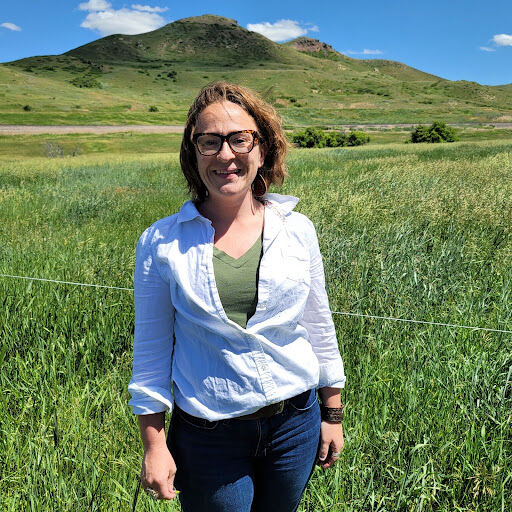Carbon markets can add to a revenue stream for ranchers looking to improve forage and pasture land. Producers may also have questions about how the markets work and long-term benefits.
Jerry Stephens, a regional sales manager based in Sioux Falls, South Dakota, and Brekke Munks, a carbon cropping agronomist based in Saratoga, Wyoming, addressed those questions in a recent webinar. Both work for Agoro Carbon Alliance, a United States-based firm that is backed by Yara International, of Norway. The company provides programs for crop producers focusing on reduced inputs and tillage, crop rotation, nitrogen management, and deploying cover crops.
Livestock operations have unique opportunities, Stephens said. Livestock contributes to greenhouse gas emissions but the industry offers a solution.
“We’re capturing carbon out of the air and putting it into the soil,” he said. The cattle then consumes the grass and forage and through their waste that helps sequester carbon, too.
Sequestering carbon and reducing carbon dioxide from the atmosphere is here to stay, Munks said. Forage can be fed to livestock, and the manure generated by cattle can be used for fertilizer.
“It is a way to create new revenue streams and cash flow for ranchers,” Stephens said. “Carbon practices improve soil health and build resiliency in agriculture.”
Carbon credit
A carbon credit is a traceable asset traded in a metric ton (2,205 pounds) of carbon dioxide, Stephens said. The company seeks high quality carbon and uses third party soil sampling and analysis to verify this. Furthermore, auditors assess the projects and write reports, and a carbon registry firm then issues credits.
Agoro Carbon is able to take the proven carbon credit to the marketplace where there are willing buyers.
Stephens said Agoro Carbon covers the cost for the issuance of the credits, the soil test process, verification and certification processes and finds the buyers for generated credits.
A custom plan for implementing practices is agreed upon with the rancher, and current soil carbon baselines are measured using soil samples, he said. In years five and 10 soil samples are taken again to determine the amount of new carbon sequestered, he said. Once it is verified, the credit goes through a financial exchange and establishes a value in marketplace. When the rancher receives a payment, it can be tailored to best fit the cash flow needs of his or her operation.
Since June of 2021, Agoro Carbon Alliance has paid out $9 million to ranchers, and Stephens believes the market will continue to grow.
Research partnership
Munks has spent 15 years researching range and plant science and how to integrate soil microbes to boost forage production and optimize carbon and nitrogen levels. Agoro Carbon’s approach has been to focus on ranchers’ needs. A carbon management plan can help ranchers obtain a higher payout on their land. A comprehensive program also involves the use of grazing management strategies. Improving soil carbon and forage quality can help increase forage intake by livestock. It can also mean planting additional forage species that can build organic matter, she said.
In most grassland or range acres nitrogen in the soil is deficient and adding fertilizer back primes the organic matter process and increases forage yield over time. Increasing organic matter also adds to the land’s capacity to hold water, which helps particularly in drought years. It also increases microbial activity and can mean less reliance on pesticides and herbicides.
Munks said Agoro Carbon’s approach is to use multiple agronomists to work holistically with ranchers to strengthen their pasture and rangeland so the operation works. It also integrates customized rotational grazing program. “We optimize carbon management plans for each producer.”
Another important concept, Munks said, is to ask producers from the beginning what they seek as an end goal. She noted that some ranchers use forage to feed their own cattle and to sell it.
She recommends that producers consider their goals and what works for their current activities. Agoro Carbon requires a 500-acre commitment and the team walks through the process.
“We have created the program so that it’s seamless to what you’re already doing. We don’t want this to be hard for a producer to implement,” Munks said. “We want it to be affordable and we want it to be scalable.”
Added cash flow
Munks and Stephens said ranchers have told them they have enjoyed the prospect of improving pasture and forage production while adding cash flow. Munks said one rancher used the revenue to improve the water system for his herd, which will allow him to expand.
“We’ve found people look at the carbon market not only as an opportunity to help to solidify their exceptional stewardship ability, but also to expand their ranches,” Munks said.
Ranchers are passionate about improving the quality of their land and using carbon credits can help them, she said. Several ranch families are considering using the proceeds from the program to pay land taxes or establish a college fund for their children, Munks said.
Stephens also says sequestering carbon can offer a unique way for ranchers to sell meat directly to consumers as they have tangible proof that they are doing their part to reduce greenhouse gas emissions.
Dave Bergmeier can be reached at 620-227-1822 or [email protected].


